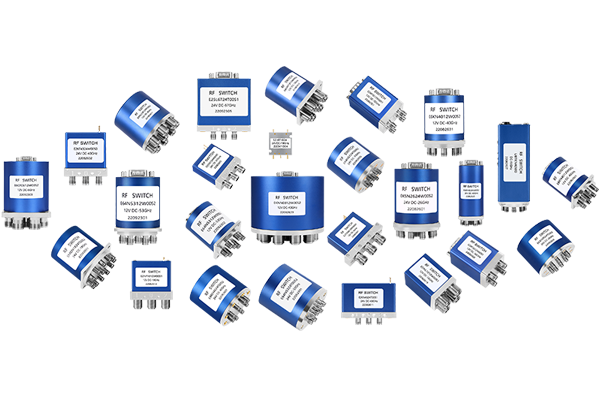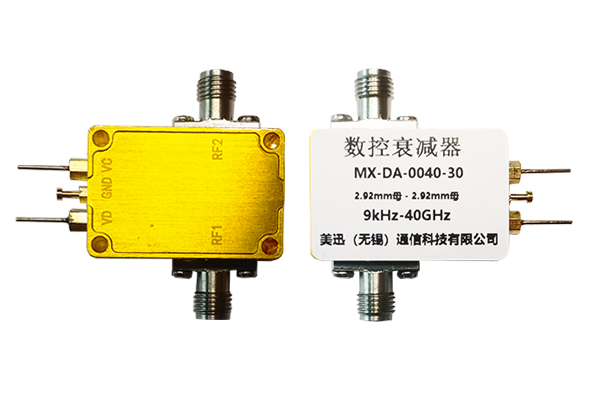
Pin diodes are established as major constituents in high-frequency electronics due to their natural device characteristics Their ability to operate with fast state changes and low capacitance while maintaining minimal insertion loss fits them to switching modulation and attenuation tasks. The fundamental operating principle of PIN diode switching rests on adjusting current flow with a control bias. A change in bias voltage transforms the depletion-region width of the p–n junction, affecting conductance. Tuning the bias current allows PIN diodes to switch effectively at RF frequencies with reduced distortion
When precise timing and control are needed PIN diodes are frequently embedded within advanced circuit configurations They can serve in RF filter networks to selectively transmit or block specific frequency ranges. Their strong signal handling properties make them practical for amplifier power divider and signal generation uses. Reduced size and improved efficiency of PIN diodes have enhanced their applicability in wireless and radar engineering
Designing Coaxial Switches for Optimal Performance
Coaxial switch design is a sophisticated process involving many important design considerations Coaxial switch effectiveness depends on the switch kind frequency of operation and insertion loss metrics. Minimizing insertion loss and enhancing isolation are primary goals for coaxial switch engineering
Analyzing performance involves measuring important parameters like return loss insertion loss and port isolation. Metrics are assessed using simulation tools theoretical modeling and laboratory measurements. Rigorous performance analysis is necessary to secure dependable coaxial switch operation
- Simulations combined with analytic methods and practical experiments are standard for coaxial switch evaluation
- Temperature fluctuations impedance mismatch and manufacturing inconsistencies can strongly alter switch performance
- Recent advances emerging trends and novel developments in coaxial switch design focus on improving metrics while reducing size and power use
LNA Performance Enhancement Techniques
Optimization of LNA gain efficiency and overall performance is critical to achieve excellent signal preservation That involves meticulous transistor choice biasing arrangements and topology selection. Sound LNA architectures control noise contributions and support strong low-distortion amplification. Modeling and simulation tools enable assessment of how transistor choices and biasing alter noise performance. Targeting a small Noise Figure quantifies how well the amplifier keeps the signal intact against intrinsic noise
- Choosing active devices with low noise profiles is a key requirement
- Establishing proper bias conditions with optimal settings minimizes noise within transistors
- Circuit topology choices are decisive for the resulting noise performance
Techniques like impedance matching noise cancellation and feedback control can further elevate LNA performance
Signal Switching Using Pin Diodes

Pin diode switch implementations yield flexible efficient routing of RF signals in diverse applications Rapid switching capability of these semiconductors supports dynamic path selection and control. Strong isolation and low insertion loss in PIN diodes contribute to reduced signal degradation. They are applied in antenna selection circuits duplexers and phased array antenna systems
The applied control voltage modulates resistance to toggle the diode between blocking and passing states. While in the off state the diode creates a high impedance path that blocks the signal flow. Applying a forward control voltage lowers the diode’s resistance enabling signal transmission
- Furthermore additionally moreover pin diode switches deliver fast switching speeds low power use and compact footprints
Different architectures and configurations of PIN diode switch networks enable complex routing capabilities. Linking multiple PIN switches produces dynamic matrices that allow adaptable signal path configurations
Performance Efficacy Assessment of Coaxial Microwave Switches

Extensive testing and evaluation are important to ensure coaxial microwave switches operate optimally in complex systems. Multiple determinants including insertion reflection transmission loss isolation switching speed and operating bandwidth shape performance. A full evaluation process measures these characteristics under various operating environmental and test conditions
- Additionally furthermore moreover the assessment must address reliability robustness durability and tolerance to severe environments
- Ultimately comprehensive evaluation outputs provide critical valuable and essential guidance for switch selection design and optimization for targeted uses
In-depth Review of Noise Suppression in LNA Circuits
LNAs are indispensable in wireless RF communication systems because they raise weak signals while suppressing noise. The paper provides a comprehensive examination analysis and overview of techniques aimed at lowering noise in LNAs. We analyze investigate and discuss main noise origins such as thermal shot and flicker noise. We additionally survey noise matching feedback circuit methods and optimal biasing approaches to reduce noise. The article highlights recent advances such as novel semiconductor materials and innovative circuit architectures that reduce noise figure. By giving a clear understanding of noise reduction principles and practices this article aims to assist researchers and engineers in developing high performance RF systems
Applications of PIN Diodes for Fast Switching

They exhibit unique remarkable and exceptional features that render them ideal for high speed switching Their small capacitance and low resistance facilitate high speed switching suitable for accurate timing control. Moreover PIN diodes exhibit linear proportional responses to applied voltage enabling precise amplitude modulation and switching control. This flexible adaptable versatile behavior makes PIN diodes suitable applicable and appropriate for varied high speed roles They find use in optical communications microwave circuitries and signal processing devices and equipment
Integrated Circuit Solutions for Coaxial Switching
Coaxial switch integrated circuits deliver improved signal routing processing and handling within electronic systems circuits and devices. Such integrated circuits are built to control manage and direct signal flow over coaxial lines while delivering high frequency performance and low propagation or insertion latency. IC miniaturization enables compact efficient reliable and robust designs ideal for dense interfacing integration and connectivity needs
- With careful meticulous and rigorous execution of these strategies designers can obtain LNAs exhibiting excellent noise performance for sensitive reliable systems By meticulously carefully and rigorously applying these methods developers can produce LNAs with superior noise performance enabling sensitive reliable electronics Through careful meticulous and rigorous implementation of these approaches engineers can achieve LNAs with exceptional noise performance supporting sensitive reliable systems With careful meticulous and rigorous deployment of these approaches developers can accomplish LNAs with outstanding low-noise amplifier noise performance enabling trustworthy sensitive electronics
- Use cases include telecommunications data communications and wireless network infrastructures
- Aerospace defense and industrial automation are key domains for integrated coaxial switch technology
- Consumer electronics A V devices and test measurement apparatus make use of IC coaxial switch technologies
Low Noise Amplifier Design for mmWave Systems

At mmWave frequencies LNAs must contend with greater signal attenuation and intensified influence from noise sources. Parasitic elements such as capacitance and inductance dominate performance at mmWave so layout and component selection are critical. Controlling input match and achieving high power gain are critical essential and important requirements in mmWave LNA design. Choice of active devices such as HEMTs GaAs MESFETs or InP HBTs is crucial to reach low noise figures at mmWave. Additionally furthermore moreover careful design implementation and optimization of matching networks is vital for efficient power transfer and impedance matching. Attention to package parasitics is crucial as they have potential to harm mmWave LNA performance. Choosing low-loss interconnects and sound ground plane designs is essential necessary and important to minimize reflections and maintain high bandwidth
Modeling Strategies for PIN Diode RF Switching
PIN diodes are vital components elements and parts used throughout numerous RF switching applications. Precise accurate and comprehensive characterization of these devices is essential to support design development and optimization of reliable high performance circuits. Included are analyses evaluations and examinations of electrical voltage and current characteristics such as resistance impedance and conductance. Additionally frequency response bandwidth tuning properties and switching speed latency or response time are assessed
Furthermore moreover additionally accurate model and simulation development for PIN diodes is vital essential and crucial for behavior prediction in RF systems. Various modeling approaches such as lumped element distributed element and SPICE models are used. The selection of an apt model simulation or representation relies on particular application requirements and the expected required desired accuracy
Advanced Cutting Edge Sophisticated Techniques for Low Noise Quiet Minimal Noise Amplifier Design
Designing LNAs is a crucial task requiring careful attention to circuit topology and component selection to reach optimal noise performance. Recent semiconductor breakthroughs and emerging technologies enable innovative groundbreaking sophisticated noise reduction design techniques.
Examples of techniques are implementing employing and utilizing wideband matching networks choosing low noise transistors with strong intrinsic gain and optimizing biasing schemes strategies and approaches. Furthermore additionally moreover advanced packaging methods and thermal management solutions play a vital role in reducing external noise contributions. By meticulously carefully and rigorously adopting these practices designers can deliver LNAs with excellent noise performance supporting reliable sensitive systems
